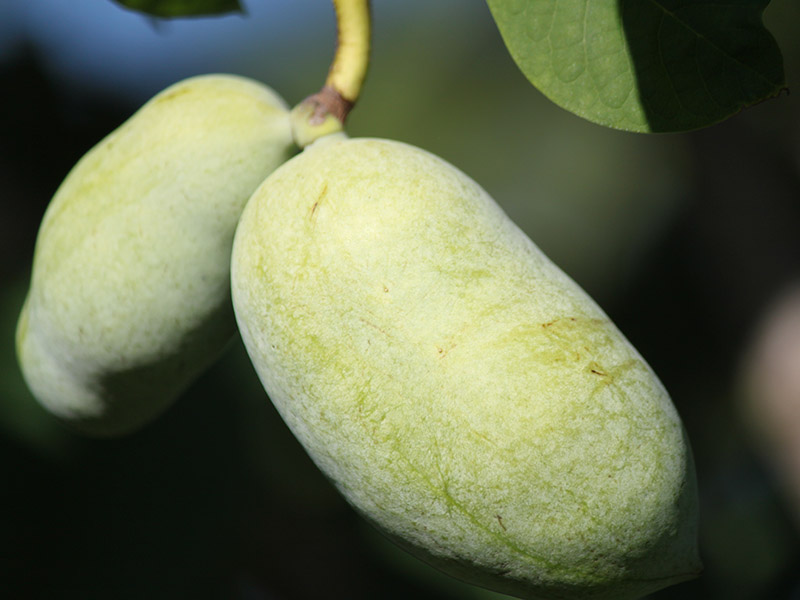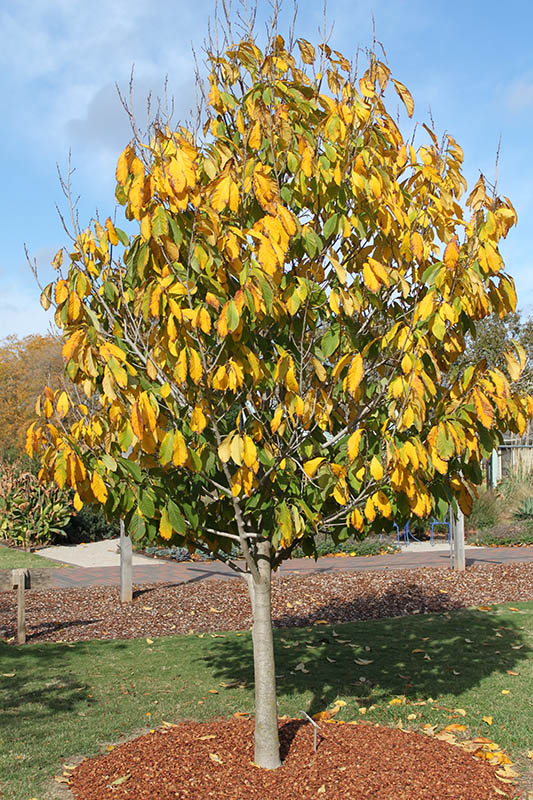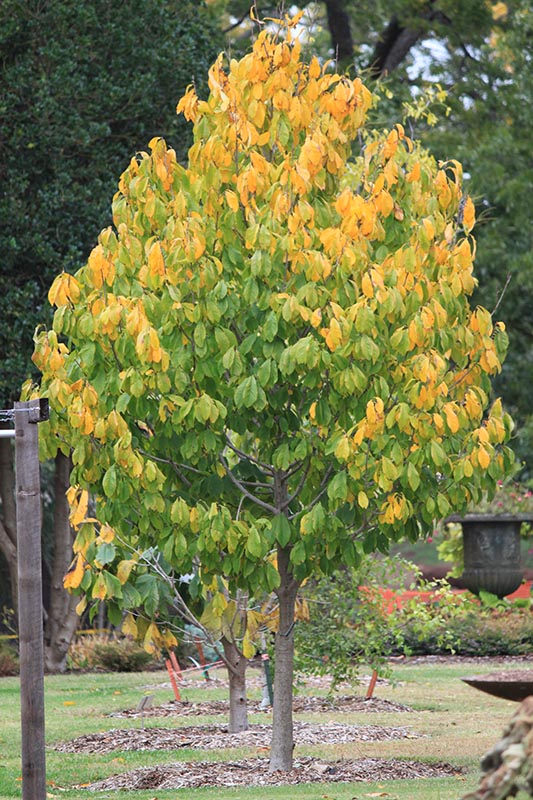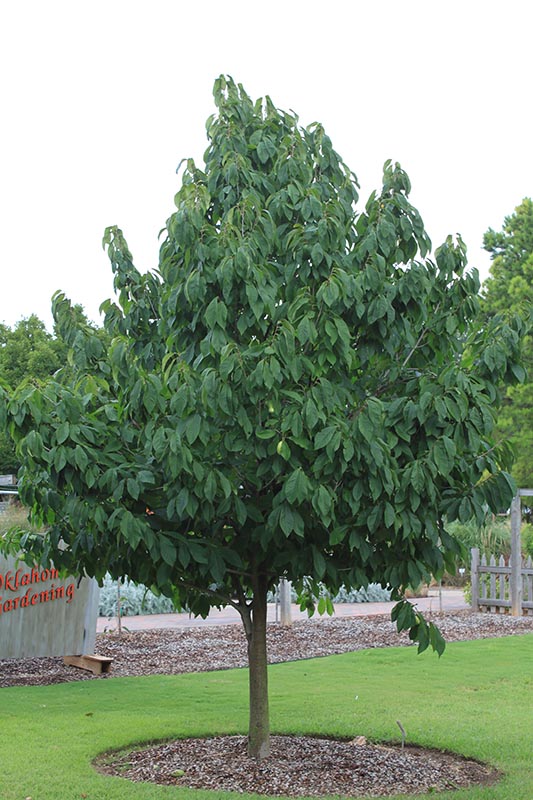Pawpaw
Asimina triloba
Pawpaw is a native, understory tree. It is native to Canada and the eastern U.S. where
it grows in deep shade to full sunlight in moist, nutrient-rich forests. It will tolerate
occasional wet or moist conditions but prefers good drainage and acidic soil. Flowers
are purplish-brown flowers, have both male and female parts, but are self-incompatible.
Trees require cross pollination so at least 2 and preferably 3 different varieties
should be grown. Trees are pollinated by insects other than bees and must be planted
close together. In late summer to early fall, edible, sweet-tasting, and custard-like
fruit develop. Harvesting can be difficult with competition from ambitious wildlife.
The leaves turn a yellow color in the fall and provide interest. Pawpaw attracts butterflies,
pollinators, small mammals, and songbirds, making it a good addition to a butterfly,
pollinator, or rain garden. It is an easy-to-grow fruit tree for children's gardens.
Exposure: Full sun to shade
Soil: Moist, well-drained, occasionally wet
Hardiness: USDA Zones 5-9
Soil: Moist, well-drained, occasionally wet
Hardiness: USDA Zones 5-9




